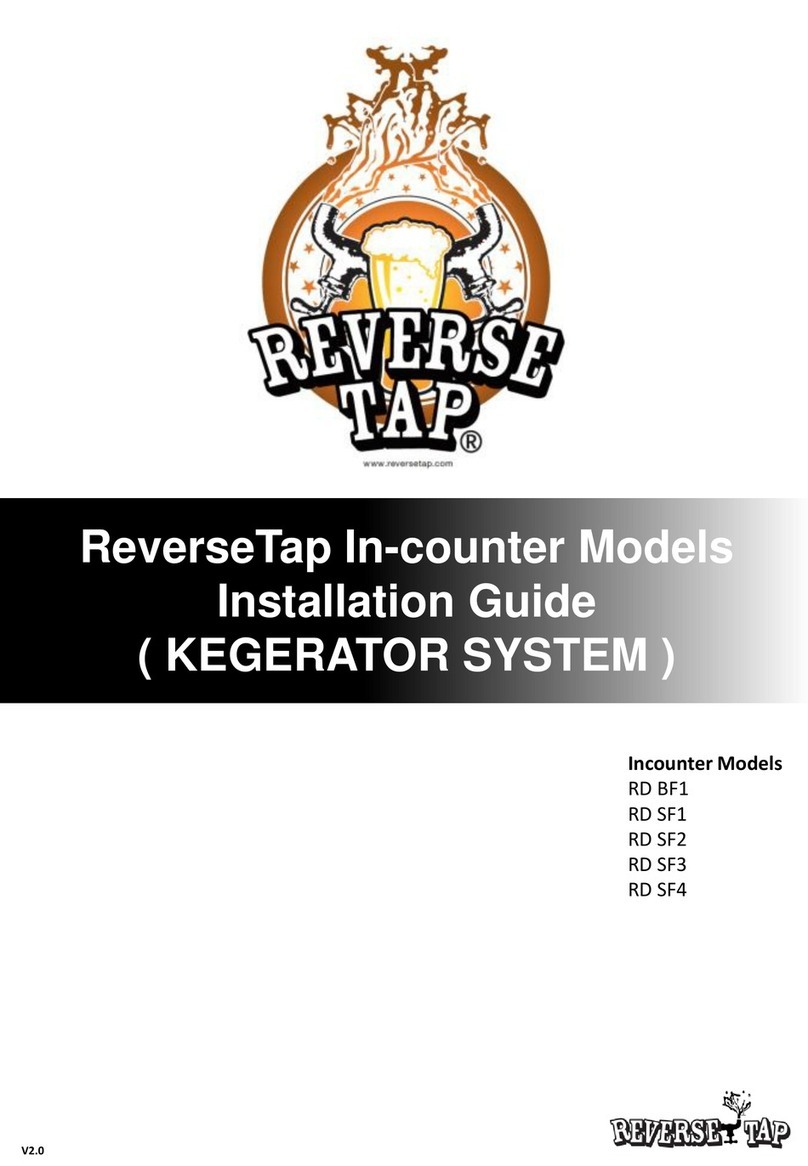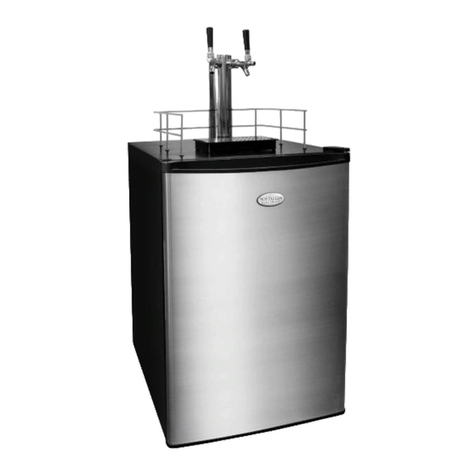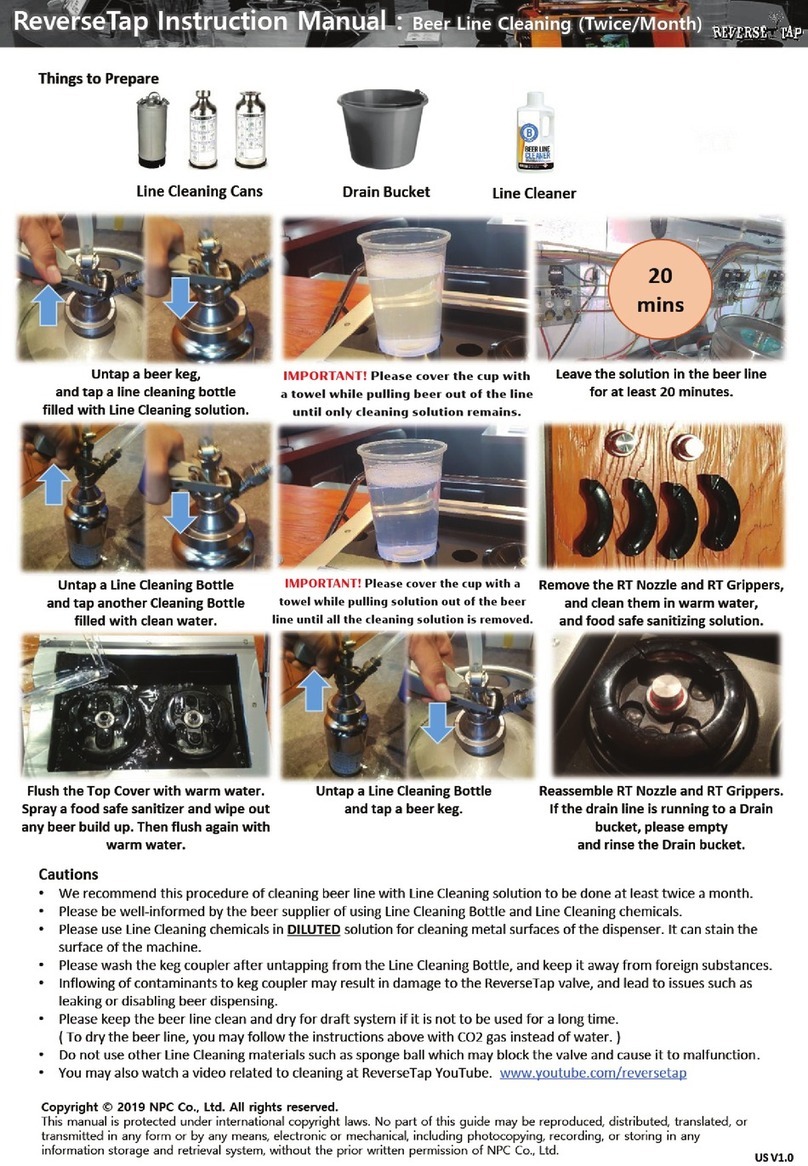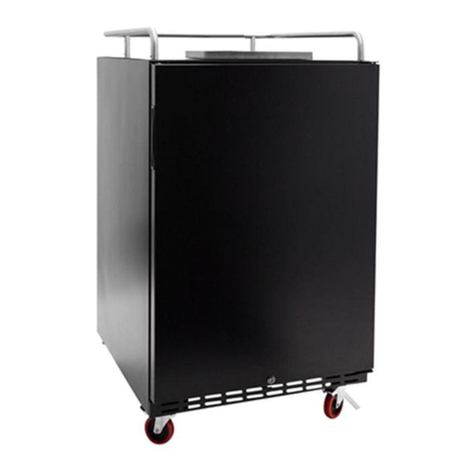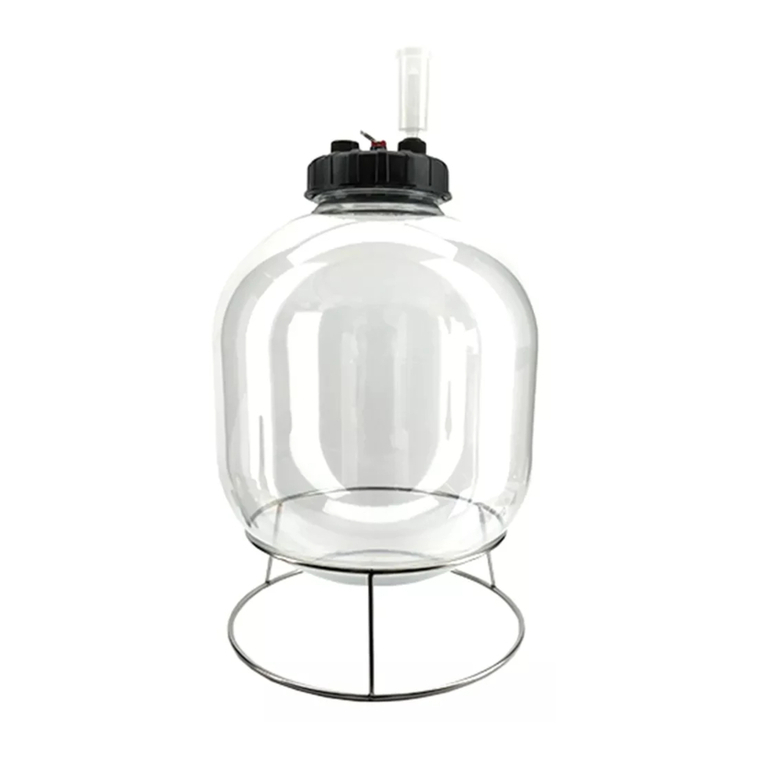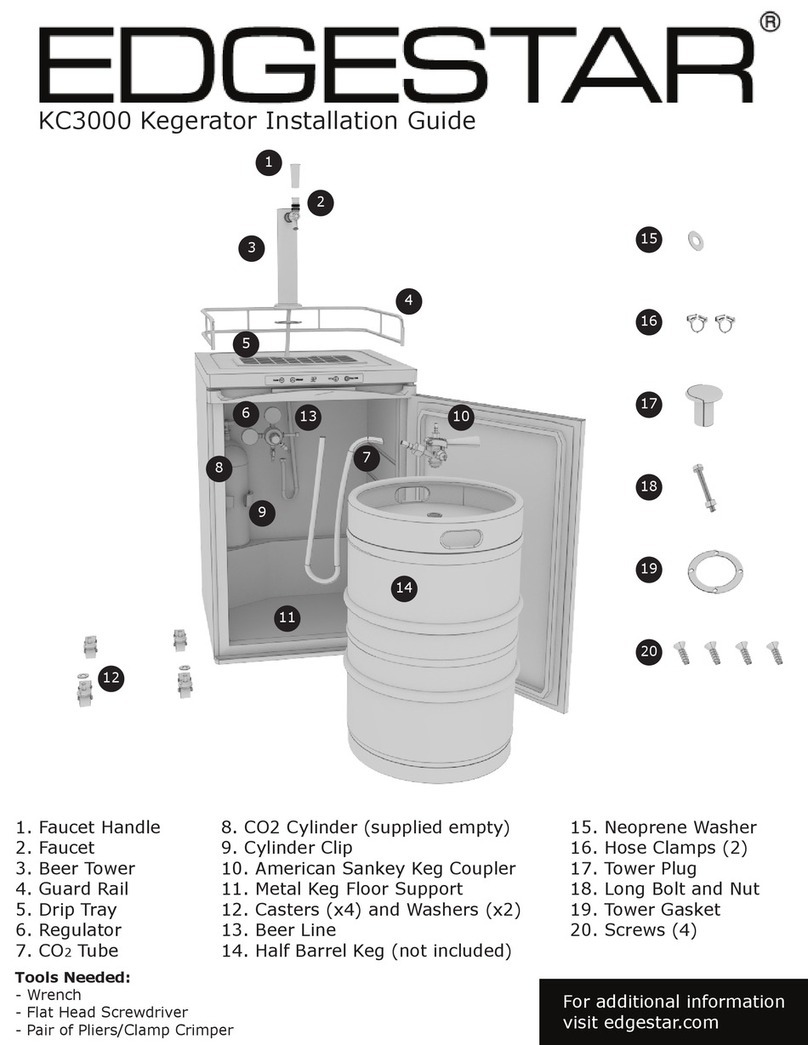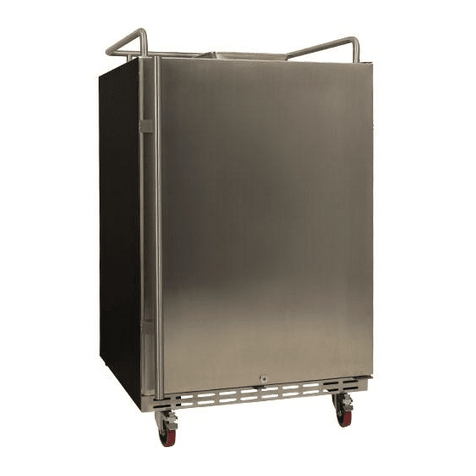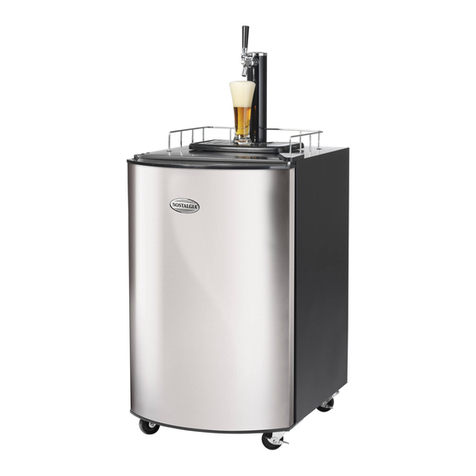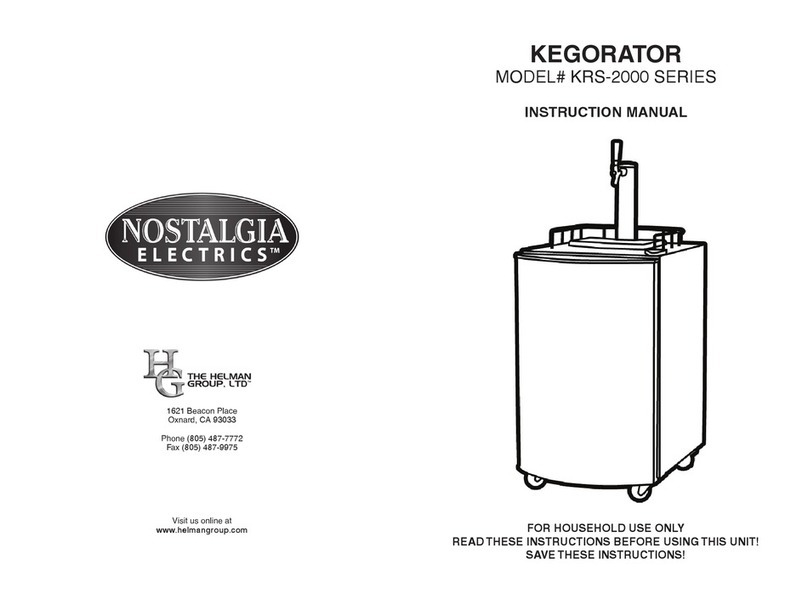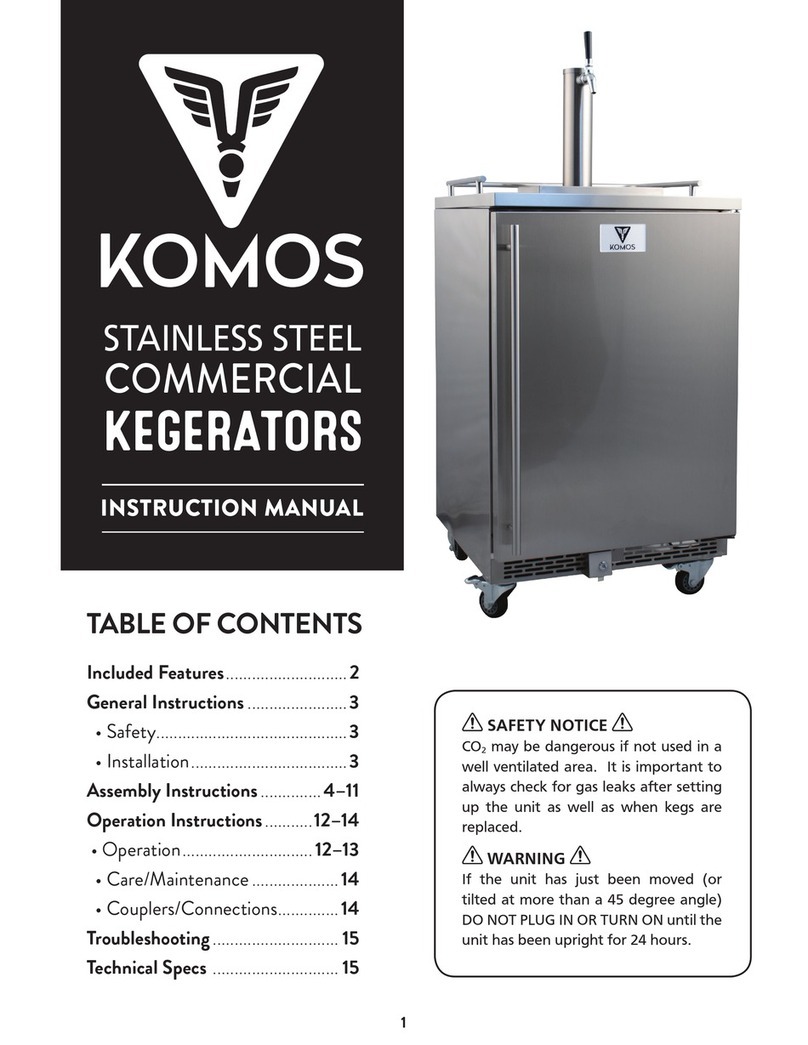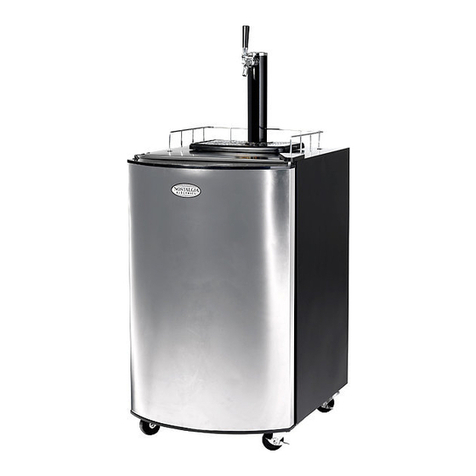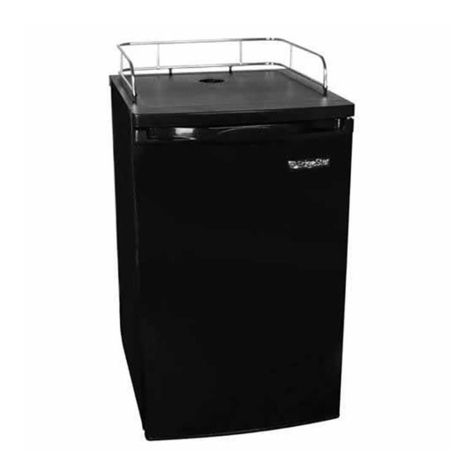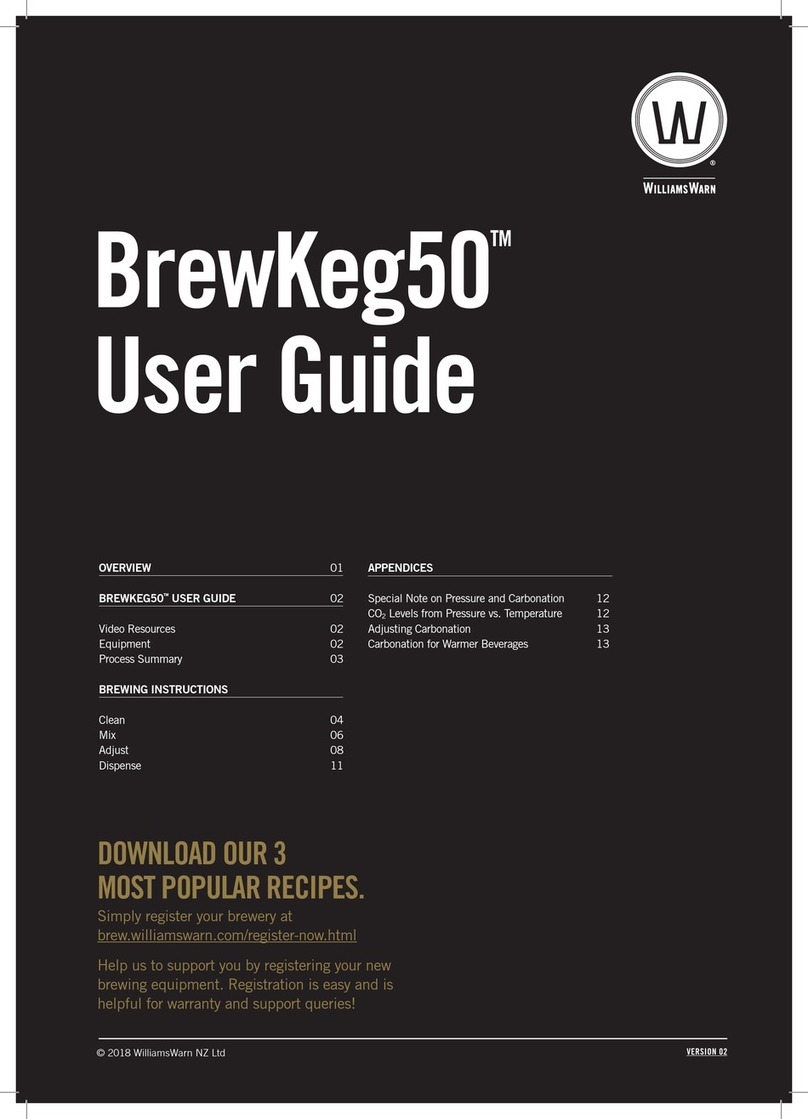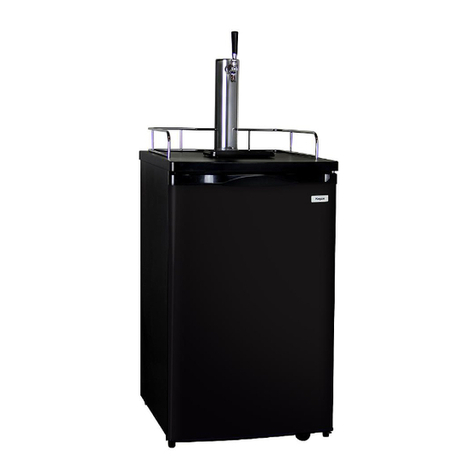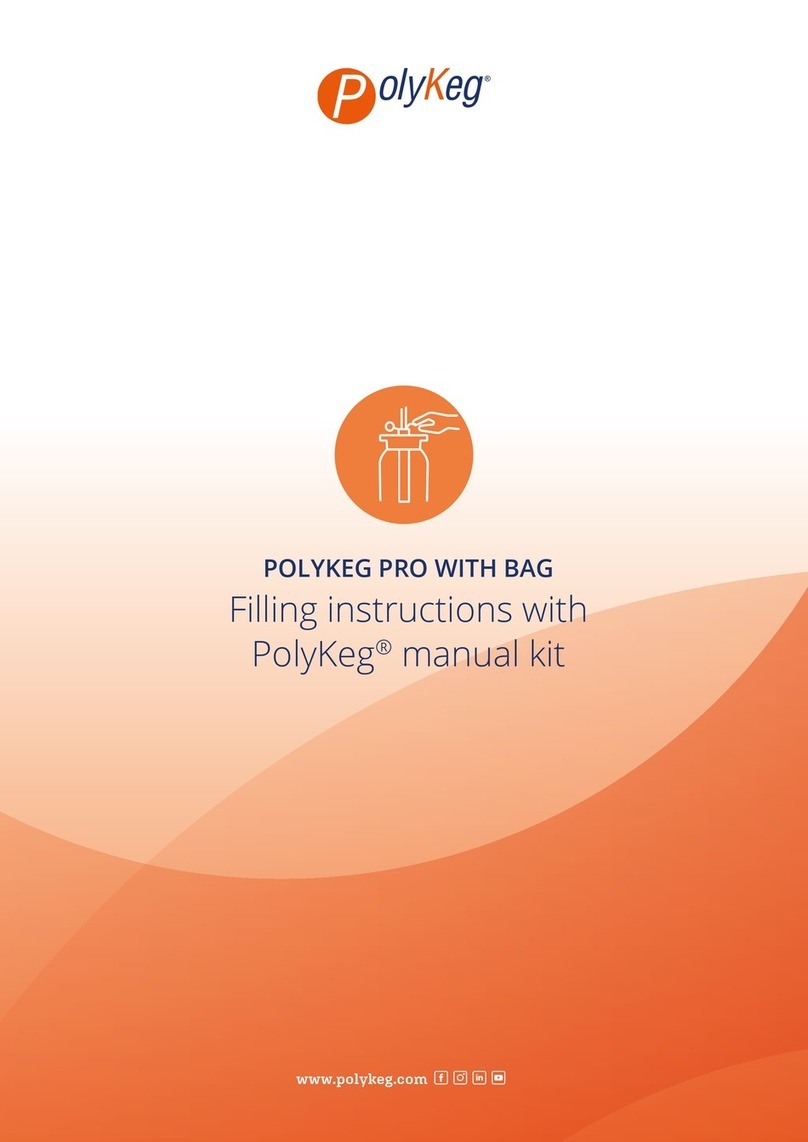
2
IMPORTANT SAFETY INFORMATION
GENERAL PRECAUTIONS
•When kegerator is installed or used, all packaging (including carton and
plastic wrap) should be removed.
•Keep kegerator stable to avoid vibration and noise.
•The kegerator should be installed in a place with good ventilation and a space
of at least 4" between surrounding walls and the cabinet wall for air circulation.
Installation without proper ventilation will void the manufacturer's warranty.
•Kegerator should be placed far from any heating source to avoid decrease of
refrigeration eciency.
•Install the kegerator in a dry place to prevent rust from forming on the
compartment body, which may aect the electrical insulation.
•Avoid collisions and strong vibrations when transporting. Avoid resting the
cabinet at more than a 45° angle.
•Please refer to the Troubleshooting section of this manual when your
kegerator has operation issues. DO NOT attempt to solve the problem on
your own. Please refer to a certified technician only.
•If the power cuts o, wait for at least 5 minutes before turning on the unit
again to avoid damage to the compressor.
•Do Not climb, stand or hang on the shelves of the kegerator.
•Setting the temperature controls to the 0 (zero) position does not remove
power to the light circuit, perimeter heaters or evaporator fans.
•When lifting the kegerator do not use the countertop as a lifting point.
•Leave kegerator upright for 24 hours before plugging into power source.
ELECTRICAL HAZARDS
Failure to follow these warnings could result in electrical
shock resulting in serious injury or death.
When using electrical appliances basic safety precautions must be followed:
•This cooler must be properly installed and located in accordance with the
installation instructions before use.
•In case of damage to the electrical cord and plug, contact an electrician to
repair. Never repair the electrical cord or plug yourself.
•When unplugging unit, grasp by the plug, not the cord.
•If the voltage is unstable, please select a suitable automatic voltage regulator.
•The kegerator must be grounded correctly. Individual single-phase socket
must be used. It should be reliably connected to a grounding wire. DO NOT
connect grounding wire to water or gas pipe.
•Unplug the unit from the electrical outlet before cleaning or making repairs.
•Do not under any circumstances cut or remove the grounding prong from
the power cord.
•Appliance must be properly grounded at all times.
•Never use an adapter plug.
•Compressor warranties are voided if compressor burns out due to low
voltage.
FIRE AND EXPLOSION
Failure to follow these warnings can result in fire or explosion,
causing serious injury or death.
•Risk of fire or explosion. Flammable refrigerant used. DO NOT use
mechanical devices to defrost kegerator. DO NOT puncture refrigerant
tubing.
•Risk of fire or explosion. Flammable refrigerant used. To be repaired only by a
trained service technician. DO NOT puncture refrigerant tubing.
•Risk of fire or explosion. Dispose of properly in accordance with federal or
local regulations. Flammable refrigerant used.
•Risk of fire or explosion due to puncture of refrigerant tubing; follow handling
instructions carefully. Flammable refrigerant used.
•Keep clear of obstruction all ventilation openings in the appliance enclosure
or in the structure for building-in.
•Servicing shall be done by an authorized refrigeration service, to minimize the
risk of possible ignition due to incorrect parts or improper service.
•Remove all packaging for bottom heat radiation to avoid fire.
•Do Not store or use gasoline or other flammable vapors and liquids in the
vicinity of this or any other appliance.
•Never store flammable, explosive or corrosive liquid or gas in or near the kegerator.
PROPER DISPOSAL OF EQUIPMENT
DANGER! RISK OF CHILD ENTRAPMENT.
When disposing of a kegerator, please follow the instructions below to eliminate
the risk of child entrapment.
1. Remove the doors.
2. Leave shelves in place to prevent children from easily climbing inside.
REFRIGERANT DISPOSAL
Your old kegerator/refrigerator may have a cooling system that used "ozone
depleting" chemicals. If you are throwing away your old kegerator/refrigerator,
be sure the refrigerant is removed for proper disposal by a qualified service
technician. If you intentionally release any refrigerants you can be subject to
fines and more under the provisions of environmental regulations.
Failure to follow these warnings could result in serious injury or death.
Failure to follow the precautions could result in equipment failure and the warranty being void.
Please read this entire instruction manual for important safety information prior to the use of your
Kegerator.
